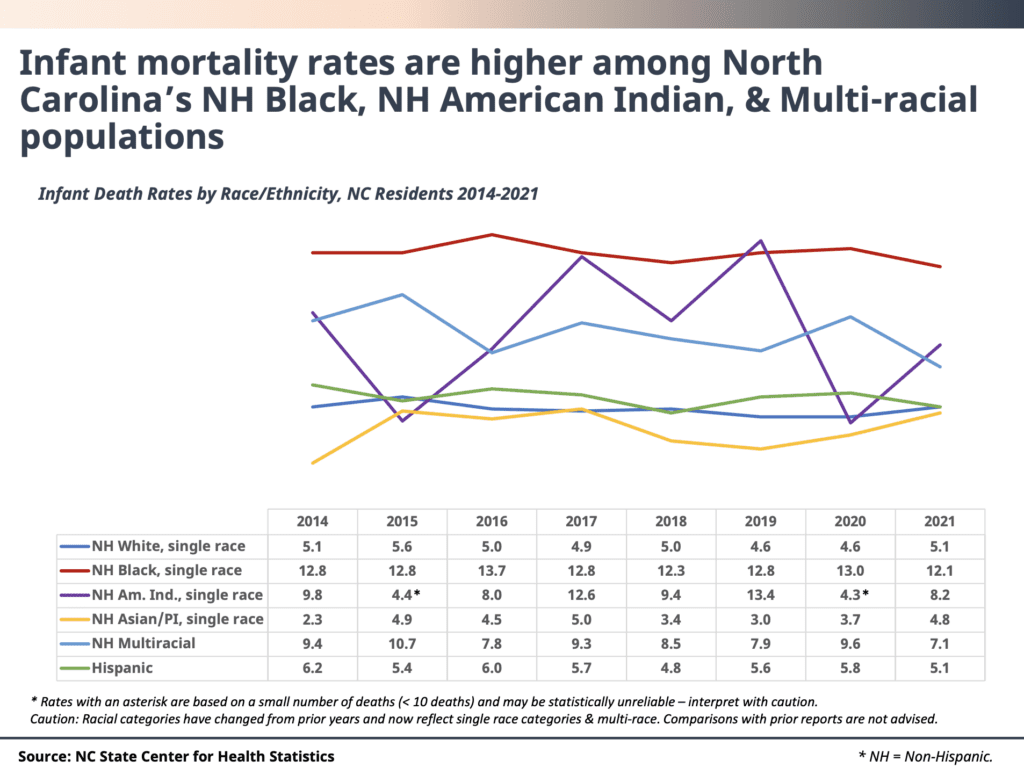|
|
In the past three decades, the infant death rate has fallen in North Carolina and in the country. The state’s rate dropped 38% from 1991 to 2021, according to the State Center for Health Statistics.
Yet North Carolina’s rate — which accounts for deaths in the first year of life — has been consistently higher than the national average since the 1990s. In 2021, the state had the 10th highest rate in the country. And the disparity between Black and white infant deaths persisted.
Kathleen Jones-Vessey, an epidemiologist in the NC Division of Public Health, shared the latest numbers, from 2021, on deaths of children younger than 17 in a presentation hosted Monday by the state’s Child Fatality Task Force (CFTF).
The 2021 rate — 6.9 deaths per 1,000 live births — was about the same as 2020’s rate of 6.8. The national 2021 rate was 5.4. But for Black babies in North Carolina, the rate was 12.1.

Racial disparities in death, low birth weight, prematurity
Black babies in North Carolina in 2021 were more than two times more likely to die in their first year than white babies, who had a rate of 5.1. American Indian infants were 1.6 times more likely to die in the first year than white infants, with a rate of 8.2.

Jones-Vessey said the state’s rates of low birth weight and prematurity, which are associated with a higher likelihood of death, also have remained higher than the national average. In 2021, 9.5% of babies were born with low birth weight in North Carolina compared with 8.5% nationally, and 10.8% of babies in the state were born prematurely compared with 10.5% nationally.


Racial disparities show up in prematurity and low birth weight rates, too, with Black infants having the highest rates in both categories, followed by American Indian infants.

What’s being done?
Reducing the racial disparity in infant mortality among Black and white infants has been a priority of multiple groups in recent years.
The state’s perinatal health strategic plan has a goal of eliminating this disparity — with a short-term goal of reducing it to 1.9 by 2026. The plan recommends strengthening the access and quality of maternal care across the state to do so.
For this legislative session, the CFTF is asking the state for funds to do just that. The group is asking for about $9 million in 2025 in recurring funds to:
- Increase the maternity provider Medicaid reimbursement rate to address obstetric care access gaps.
- Cover doula services to support mothers during labor and delivery.
- Fund group prenatal care during pregnancy.
Infants represented 60% of all 1,360 child deaths in North Carolina in 2021. The CFTF studies child deaths and recommends strategies to prevent death and promote child well-being. Find its full annual report here, including an ask to strengthen the state’s prevention system to better understand and respond to trends.




